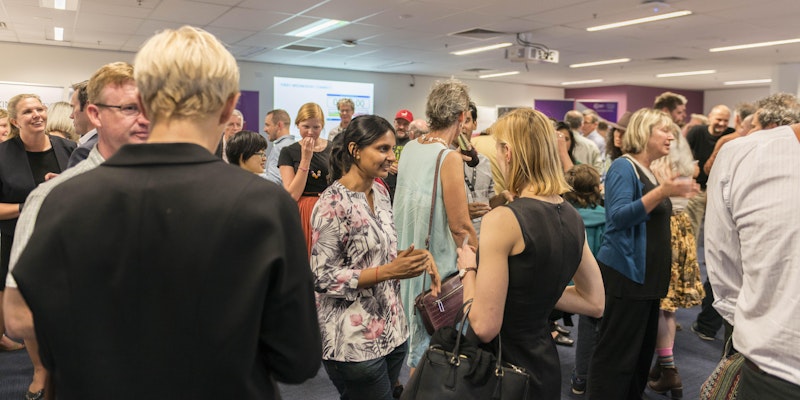Description: Students at Canberra's higher education institutions are working on startups as part of their education. Tom discusses how open access materials can assist building a knowledge sharing entrepreneur network.
About the Speaker: Tom Worthington is an independent educational technology consultant and an Adjunct Lecturer in Computer Science at the Australian National University (ANU). He is a Certified Professional, Fellow, Past President and Honorary Life Member of the Australian Computer Society (ACS). Tom previously wrote IT policy for the Australian Government. He has a Masters of Education in Distance Education from Athabasca University, a Graduate Certificate in Higher Education from the ANU and a Certificate IV in Training and Assessment from the Canberra Institute of Technology. Tom is author of the book "Digital Teaching in Higher Education", the award winning e-learning course "ICT Sustainability" and blogs as the Higher Education Whisperer.
These are the notes for the presentation using HTML Slidy. If viewing the slides you can press "A" to display these notes (and press "A" again to hide them). To advance to the next slide, press "page down", or click the left mouse button.
At the First Wednesday Connect hosted by the Canberra Innovation Network (CBRIN), I gave a sixty second pitch about my book "Digital Education". The people who pitched were then asked "What do you think Canberra needs to do to drive its innovation ecosystem?" and this ended up on a short video. Caught on the spot I ended up saying "The danger with any project with government support is it will get forgotten about before it has a chance to succeed". I am last on the video, so ended up with my image on the video thumbnail. CBRIN and how it uses the Cambridge Silicon Fen approach to industry development, features in my book.
The KILN Incubator runs a series of innovation workshops for ANU and others. One of the lessons from the workshops is that innovation is not about having a bright idea (invention), it is about application in a new and useful way. As a result entrepreneurs can be relatively open about what they do. They can tell potential clients, investors and even competitors what they are trying to do ans seek help and advice.
In five years of studying education I read many theories and techniques for distance education. One conclusion from my studies is that designing an on-line course is much the same as face-to-face. However, there is not the time or resources to teach all of this to the tutors and lecturers who do the teaching at universities. Something simpler and quicker to teach, understand and implement is needed.
The cover of my book "Digital Teaching" is illustrated with the four pictographs by Carlos Sarmento (from the Noun Project CC BY 3.0 US). This summarizes an approach with four steps:
- Provide eBooks and other curated content on the topic;
- Facilitate discussion between the students;
- Teach tools and techniques for the student to explore the topic; and
- Assess, including formative feedback, to help them learn.
The instructor can get away with making up a face-to-face course as they go along, but an on-line course needs to be carefully designed and tested in advance.
Keep in mind that what students like is not necessarily the same as what helps them learn, or what they will actually use. Offered the option of face-to-face lectures, students will say they want them, but most will then not turn up. Students prefer high quality videos, but video quality make no difference to learning.
This approach can be used for an innovation course. The design of such a course is detailed in my book Digital Teaching (2017).
Version 0.1, 20 April 2017, Tom Worthington

Open Innovation Education in Canberra by Tom Worthington is licensed
under a Creative Commons
Attribution-ShareAlike 3.0 Unported License.


![King's College Chapel, Cambridge, by Andrew Dunn (http://www.andrewdunnphoto.com/) [CC BY-SA 2.0 (http://creativecommons.org/licenses/by-sa/2.0)], via Wikimedia Commons King's College Chapel, Cambridge](https://upload.wikimedia.org/wikipedia/commons/b/b4/KingsCollegeChapelWest.jpg)










